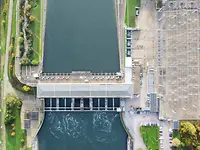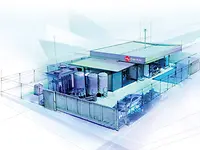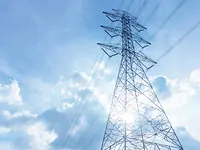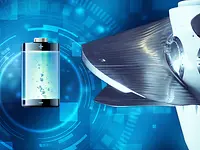Electricity for 150,000 households - Carillon, Canada
Is it green?
Powering up to reach global green goals
With 180 years of energy innovation, ANDRITZ continues to pioneer new ways of greening the global energy system. From hydro hybrids to hydrogen, our ground-breaking technologies are helping to forge a more sustainable world.

Catastrophic flooding across central Europe, crushing heatwaves in the US Midwest, large-scale forest fires in South- and Southeast Europe, record-setting temperatures and plummeting sea ice coverage – across the world it has been a summer of climate change-related calamity. Faced with the very real and growing effects of climate change, there has never been a more urgent need to address the use of fossil fuels and embrace a more sustainable approach to our energy needs. The recently published IPCC Report confirms this, warning that commitments made in the Paris Agreement to limit global temperature rises to less than 2 °C will not be met unless greenhouse gas emissions are sharply reduced.
Despite the impressive gains achieved by wind and solar power over the last decade, the consistency and reliability of hydropower means that it remains by far the single largest source of renewable energy today. According to the latest Renewables Global Status Report from REN21, global hydropower generation increased by 1.5% in 2020 to reach an estimated 4,370 TWh. Indeed, over the year, hydropower produced around 16.8% of the world’s total electricity generation, about three times the energy that was contributed by wind. Hydropower is still also the cheapest form of renewable energy.
There is still plenty of opportunity for growth though. The year 2020 also saw an estimated 19.4 GW of new hydropower capacity, bringing the worldwide total to 1,330 GW. But alongside the direct contribution, hydropower also has an increasingly important role as an enabler of other renewables. But we need to accelerate even more! “At the present rate of hydropower development, net zero emissions will not be realized,” warns the International Hydropower Association, calling for a near doubling of installed capacity by 2050. “This is a wake-up call for policy-makers, hydropower developers and project financiers and provides clarity for the public,” their latest Hydropower Status Report concludes.
Renewable power generation – a glimpse at the development
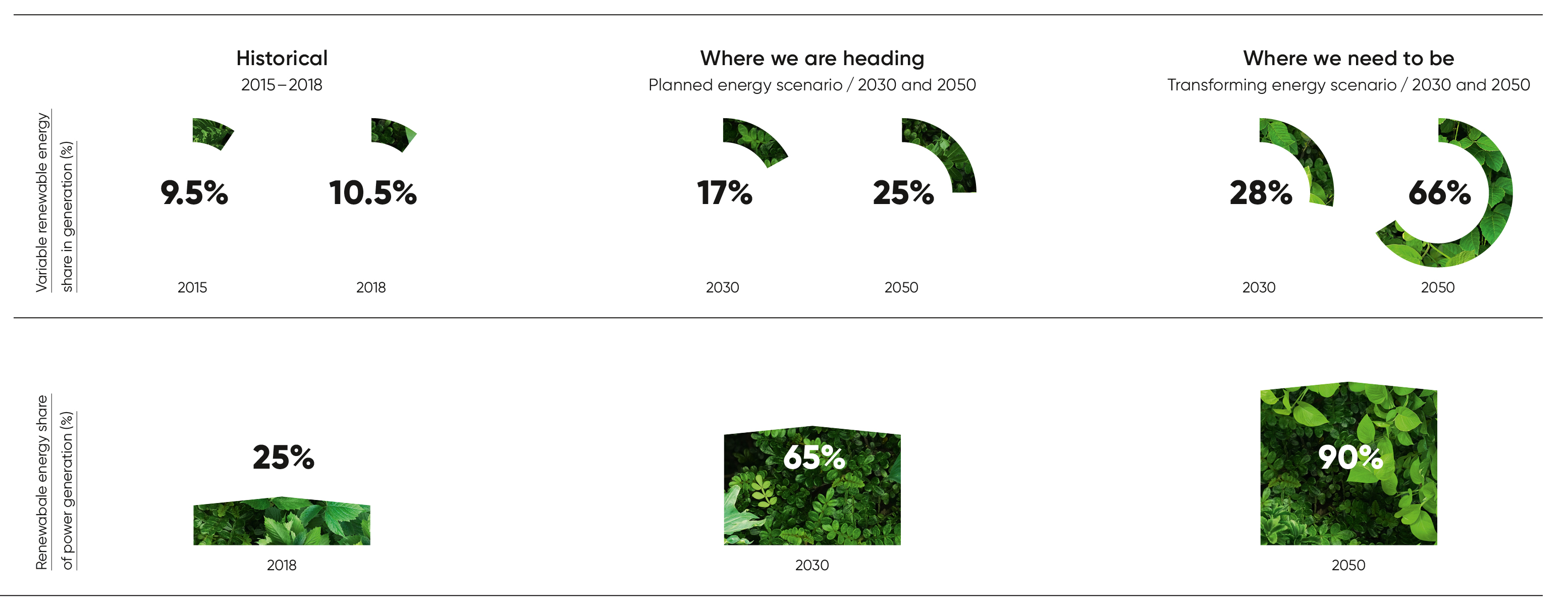
Source: IRENA, Global Renewables, Outlook 2020
- At the end of 2020, global renewable generation capacity amounted to 2,799 GW. Renewable generation capacity increased by 260 GW (+ 10.3%) in 2020.
- Solar energy continued to lead capacity expansion, with an increase of 127 GW (+ 22%), followed closely by wind energy with 111 GW (+ 18%).
- Hydropower capacity increased by 20 GW (+ 2%) and bioenergy by 2 GW (+ 2%).
- Geothermal energy increased by 164 MW.
Unifying renewables with hydro
One of the key challenges associated with significantly increasing wind and solar is their variability. The grid can become unstable as the proportion of such renewables increases and thermal fossil fueled capacity decreases. This in turn can have serious impacts on power quality and grid-connected equipment, but peaks and troughs in renewable energy generation also rarely coincide with changes in demand.
The most obvious solution is to increase the availability of storage that can accumulate excess renewable power and release it on demand. However, although chemical battery technologies have come a long way, pumped hydro storage is by far the cheapest and most effective form of bulk energy storage. According to REN 21, a further 1.5 GW of pumped hydro was added over the course of the year, representing a significant boost for variable output renewables.
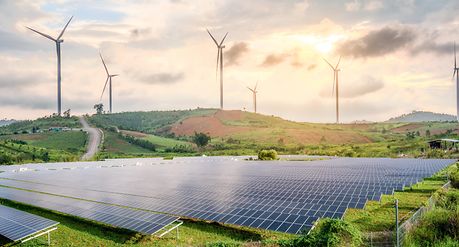
Increasing volatile energy sources like wind and solar are increasing the need for the balancing qualities of hydropower.

Kidston, Australia – Co-located pumped storage and PV power plant
While conventional pumped hydro storage continues to see growth, key innovations are set to expand the opportunities available. In Australia, for example, a novel project is underway transforming a disused mine into a renewable energy asset.
Set to be the world’s first co-located solar and pumped storage hydropower plant, Kidston is located at an abandoned gold mine in Queensland. After the mine closed in 2001, the remains included two large voids which were close to each other but feature a large difference in elevation. The project will couple a 50 MW solar farm with a 250 MW pumped hydro power plant. Subsequent phases will see another 270 MW of solar and a 150 MW wind farm added. ANDRITZ is supplying the electro-mechanical equipment for this unique project, including two 125 MW reversible pump turbines. When fully operational in 2024 it will be able to deliver 2,000 MWh over a continuous eight-hour generation cycle.
Another innovative large-scale hybrid pumped storage hydropower and renewables development is underway in India. The world’s first gigawatt-scale integrated renewable energy storage project, the Pinnapuram Pumped Storage Plant in the state of Andhra Pradesh consists of a 1.2 GW pumped hydro storage plant, a 3 GW solar plant, and 0.5 GW wind park all in close proximity. Once complete in 2023, it will have a daily storage capacity of 10.8 GWh which can be delivered over a nine-hour cycle. ANDRITZ is supplying the complete electromechanical equipment, including six 240 MW and two 120 MW reversible pump turbine units.
“The immense potential of hydropower has by no means been fully exploited. It can make a significant contribution to the redesign of our energy supply system on the road to sustainability.”

Xflex Hydro – Roadmap to more flexibility

HyBaTec – large-scale battery energy storage for hydro
ANDRITZ innovation powering up our energy future
Projects like Kidston and Pinnapuram are excellent examples of how revolutionary hydro technologies are expanding the capability of all sustainable energy sources, but ANDRITZ is working hard to develop other technologies that can support the clean energy transition too.
For instance, ANDRITZ Hydro and Mercedes-Benz Energy announced a cooperation agreement in 2020 for a hydropower hybrid solution using modern lithium-ion batteries. HyBaTec increases revenues by shifting the availability of renewables to peak periods but can also offer ancillary services for grid stability. Furthermore, HyBaTec is able to reduce stresses on older hydropower plants, increasing their operational lifespan by stepping in to supply short-term power when needed. Available from 500 kWh up to 30 MWh, HyBaTec units can be integrated into any hydropower plant.
The full capabilities of the battery and hydropower hybrid concept are being explored in a research program taking place at the Vogelgrun plant, a run-of-river project on the Rhine owned by EdF. The additional battery delivers a rapid power response and provides frequency containment reserve. ANDRITZ is at the heart of this project as part of XFLEX HYDRO, the Hydropower Extending Power System Flexibility initiative. Under this EU Horizon 2020-funded program, novel technologies that can improve the flexibility of hydropower are being tested at seven operational hydro facilities.
Another area of hydropower hybridization is the rapidly accelerating deployment of Floating Photovoltaics (FPV). Here, solar panels are fitted to pontoons floating on the surface of a hydro reservoir. This approach confers a number of efficiency advantages for solar panels and also makes use of space that would be otherwise unproductive, creating additional revenues as well.
“For ANDRITZ, a clean and green future is the motivation to find tomorrow's solutions today. ANDRITZ’ innovative technologies are helping to forge a more sustainable world.”

Floating PV – A new concept for PV-hybrids

Hydrogen and Hydro – Fuelling our future
Even beyond direct power generation and hydro hybrids, ANDRITZ innovation is helping to make our world a cleaner place. With nearly two centuries of expertise in rotating machinery, ANDRITZ offers a portfolio of Synchronous Condensers that provide grid services in support of variable renewables development. Synchronous Condensers provide multiple stabilizing functions to absorb rapid fluctuations between supply and demand, as well as dynamic voltage support and system protection.
ANDRITZ is also exploring and investing in research and development in other related areas, such as hydrogen. Widely perceived as the key to a green energy future, especially for many heavy energy using industries, a hydrogen-based economy will enable the separation between renewable energy and geographical resources. Further development of this concept may lead to a scenario in which Saharan sunshine powers European paper mills or green steel production. Recently, ANDRITZ Hydro and MAN Energy Solutions signed an agreement to jointly develop international projects for the production of green hydrogen from hydropower, starting with a pilot project in Europe.

Australia, EnergyConnect Project – Synchronous condensers for a new interconnector
Leading the charge on clean power
While 2021 has been a difficult year for many that has bought the climate challenge into sharp focus, there is cause for optimism that the years ahead will hold better things. ANDRITZ is looking back on 180 years of industry-leading innovation. This long history of invention and discovery remains a central theme for the company to this day. From hybrid hydropower and renewables projects to novel pumped storage schemes, batteries, synchronous condensers, hydrogen and beyond, it is through innovation that the world will become a better and more sustainable place to live. By powering up on innovation, ANDRITZ continues to power us all towards a cleaner future.
“Not only does its consistency and reliability make it the single largest source of renewable energy today, hydropower is also a primary enabler of other renewables.”
Authors: David Appleyard, journalist and writer, Marie-Antoinette Sailer, Peter Stettner





